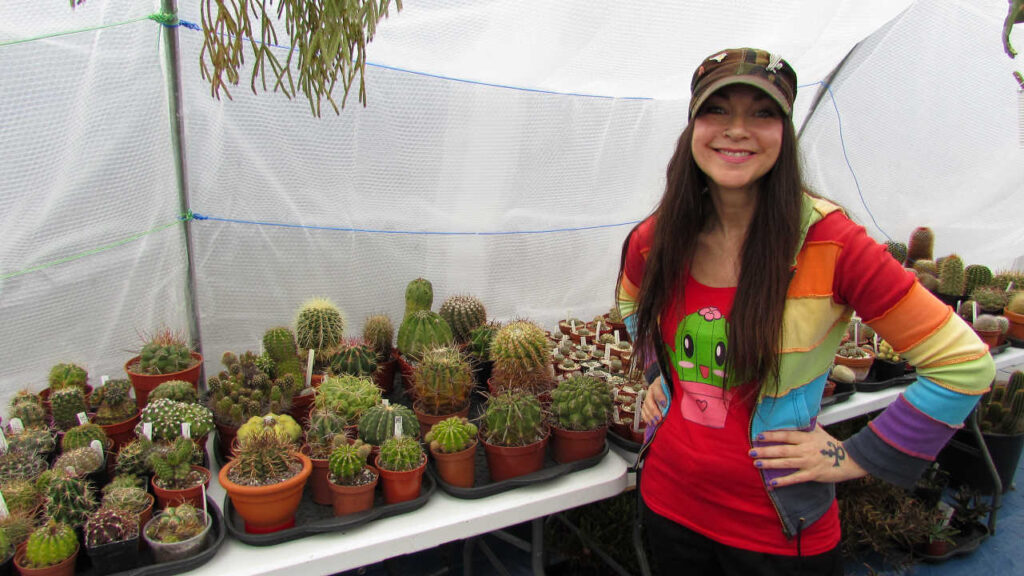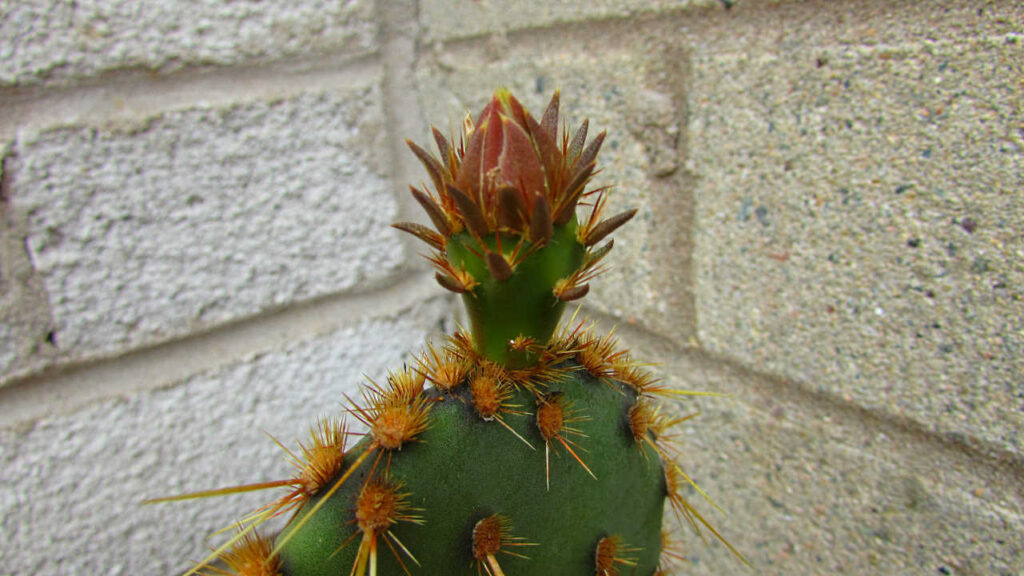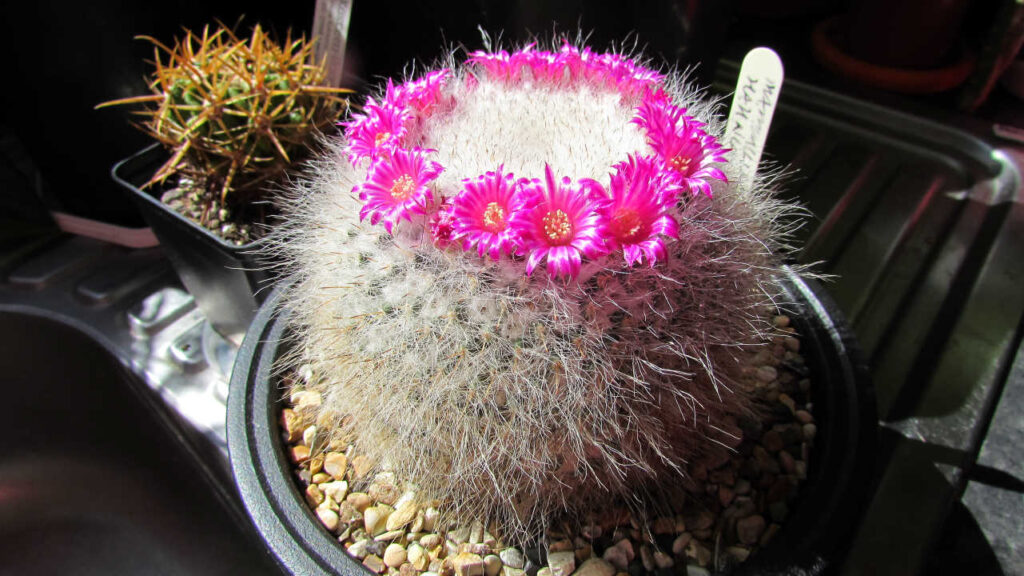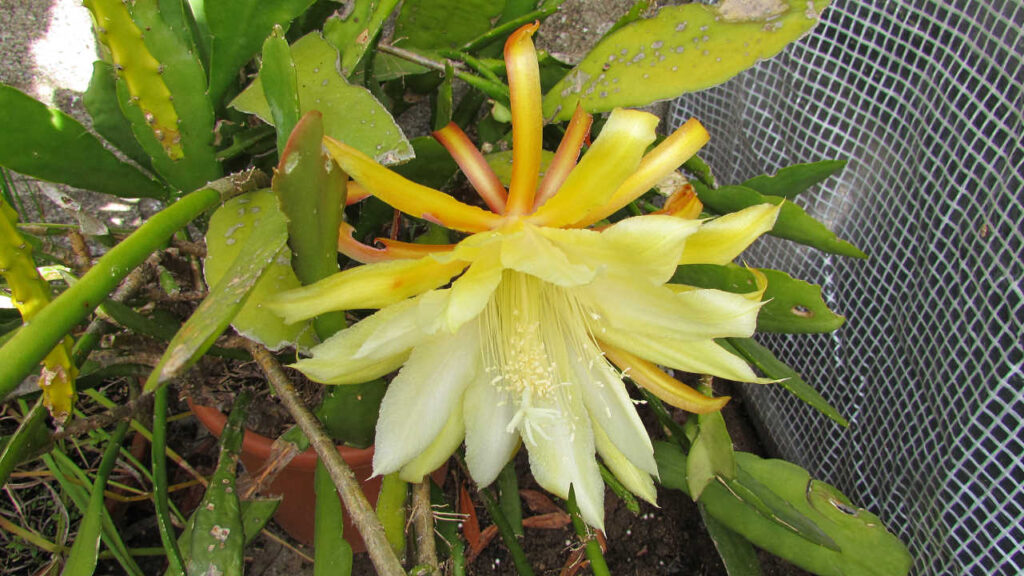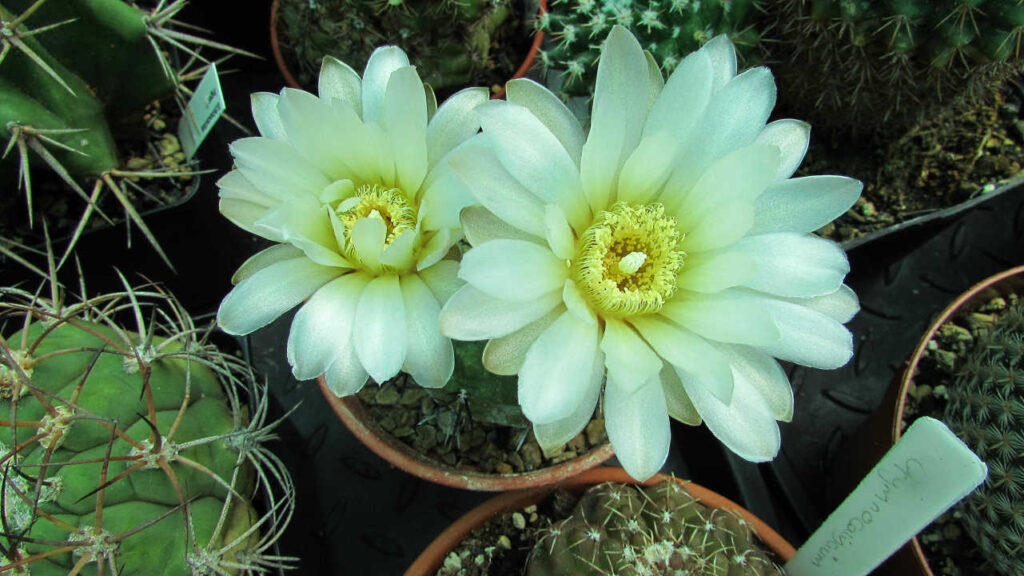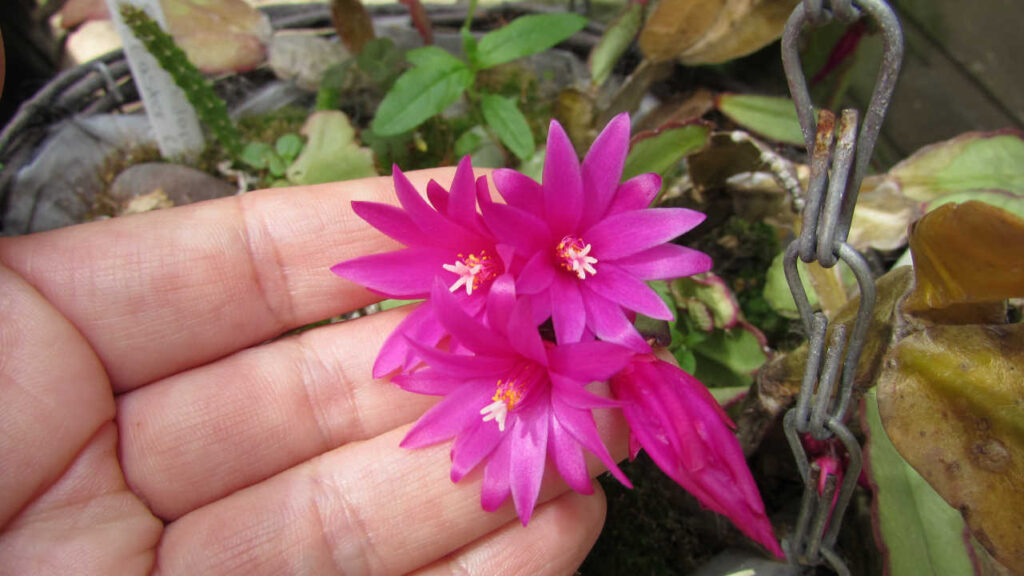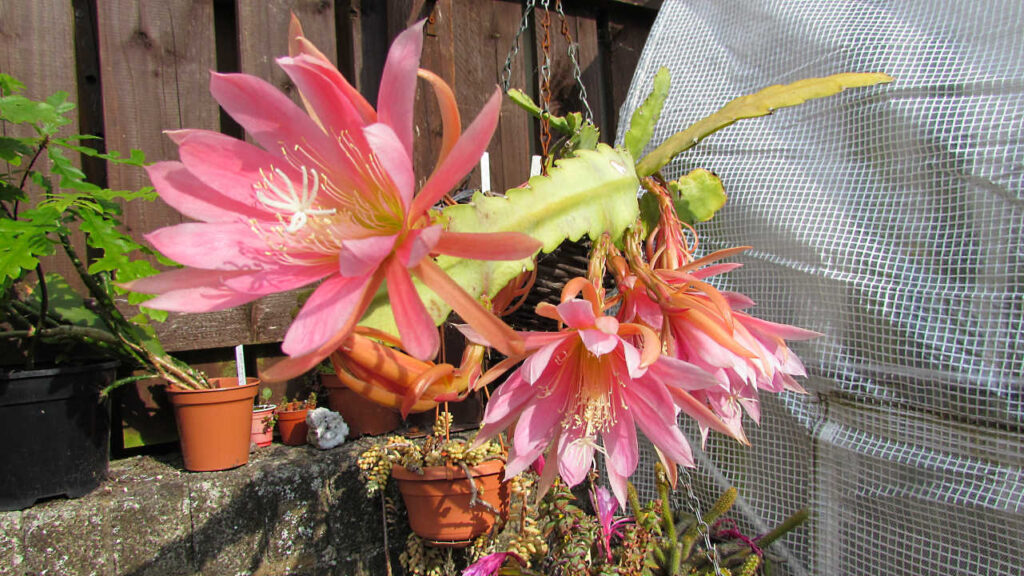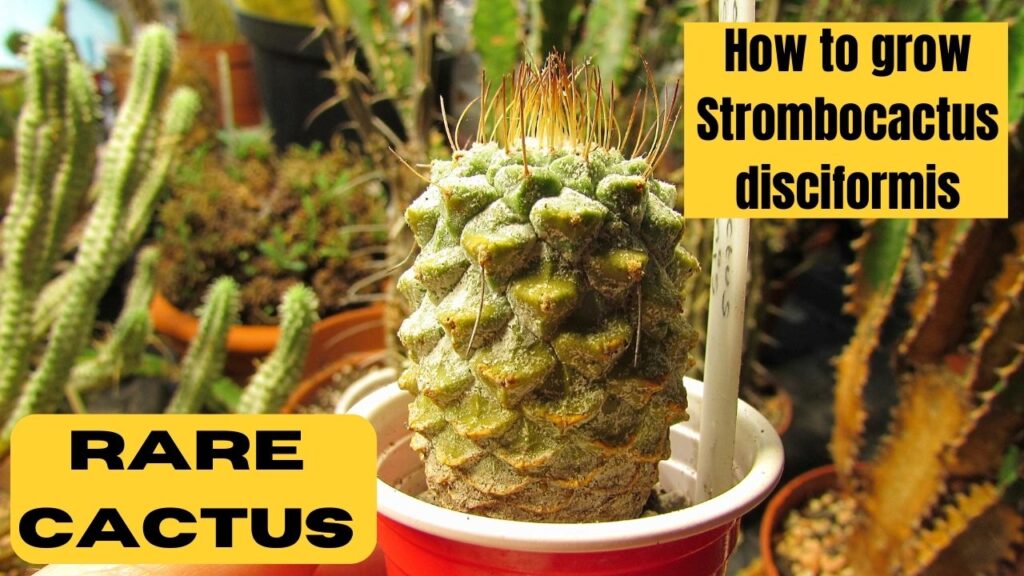Hi Guys,
Spring has arrived at last YAY! and the growing season is finally here and I have been keeping busy with all the exciting jobs to do with all of my cacti and succulents at this time of year.
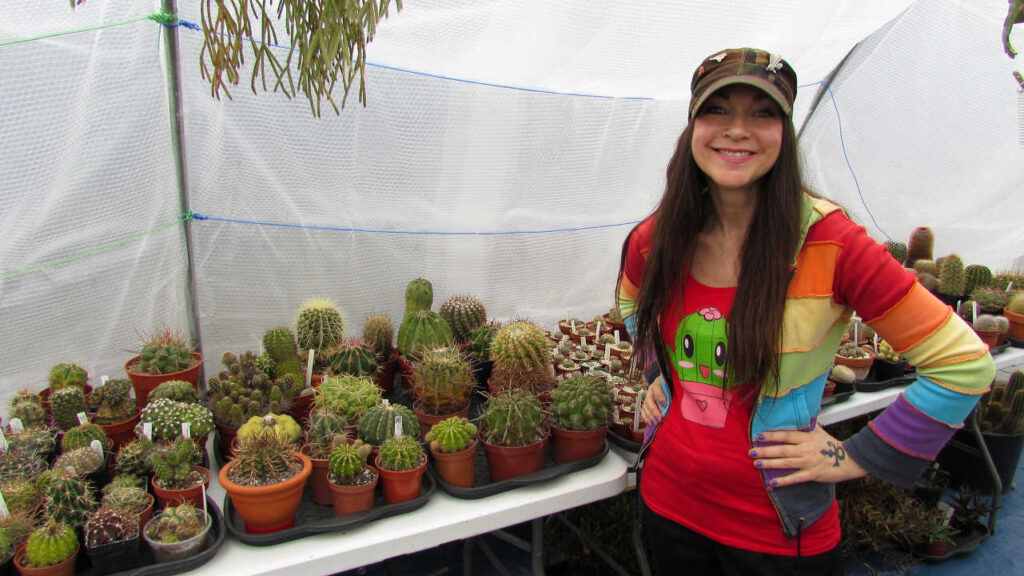
Spring is finally here and I hope that your cacti and succulents have come through the winter safe and sound, its sometimes inevitable that however much we try to look after our plants we can still lose plants over the winter months, I am so relieved that I have only had a couple of plant losses this winter, but last winter I lost quite a few cacti as did many growers due to the extended and very cold winter of 2022/23, thankfully in Ireland and UK we have had a fairly mild winter this year compared to last year.
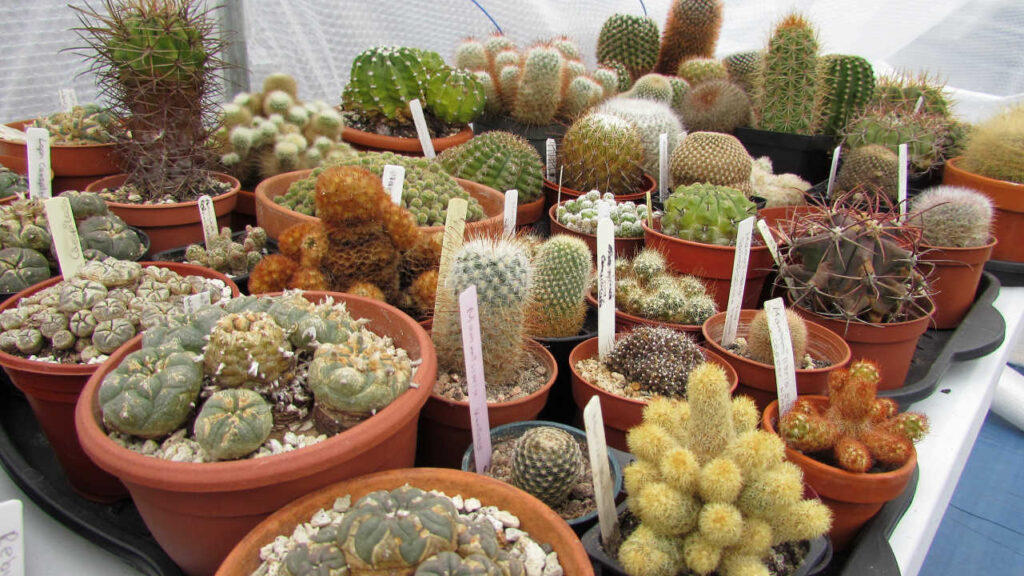
My Cacti made it through the Winter in my new polytunnel safe and sound.
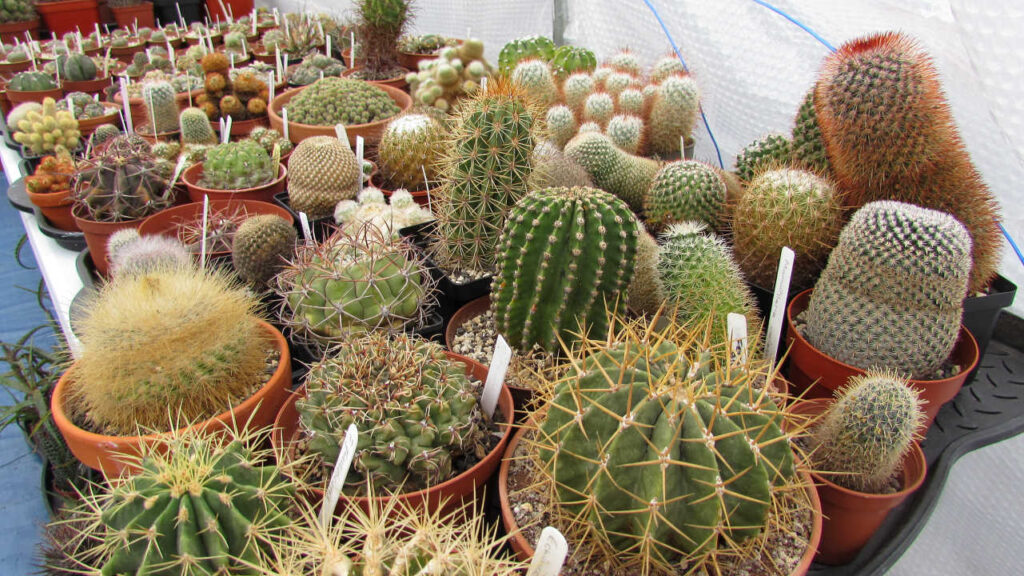
Spring really is an exciting time of year for us cacti and succulent growers, my cacti and succulents have been patiently waiting for the longer and warmer days to arrive.
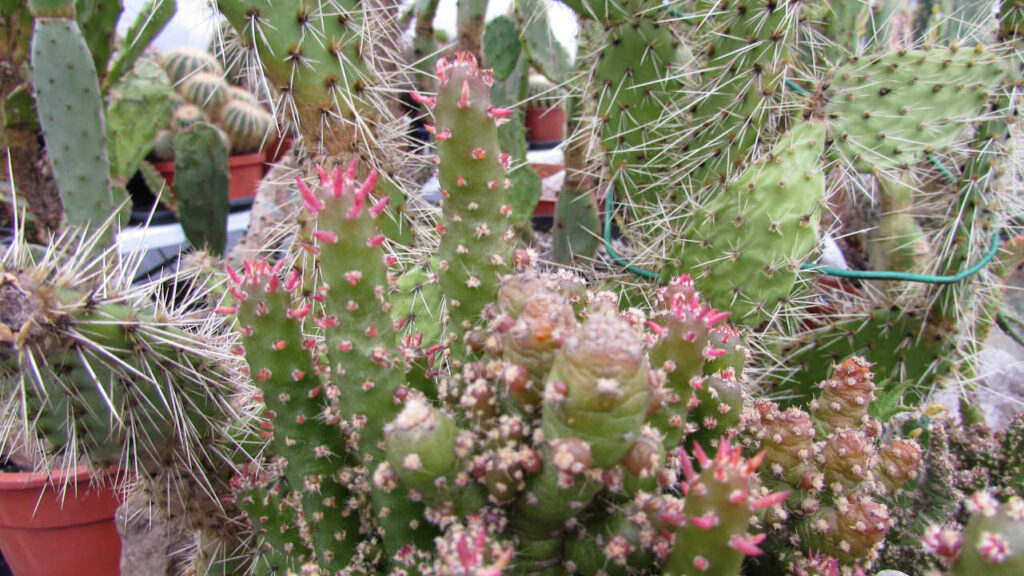
New growth appearing on my Opuntia subulata monstrose, the pink fleshy thin leaves appear first before turning to green and then falling off as the cactus ages.
Although its still a bit early for most of my plants to come into bud just yet, I have still been checking on the plants for any signs of buds, and I am very happy to see buds are starting to grow already on a couple of my Gymnocalycium cacti and my Chamacereus ‘Peanut Cacti’ and my Epiphyllum cacti are all growing buds too, I know that once I give them all their very first watering of the year the plants will start to develop buds and then over the following weeks they burst into flower.
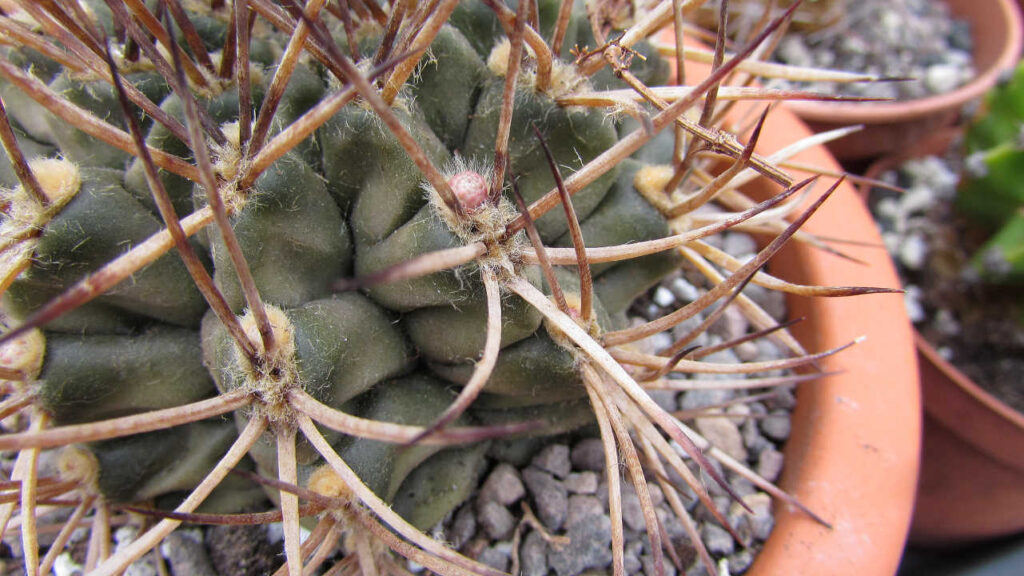
Buds are starting to appear on my Gymnocalycium Cacti ( March 2024 )

My Chamacereus Cacti ‘Peanut Cacti. are starting to grow buds, once I give these their first watering the ‘peanut stems’ will plump up and burst into flower.
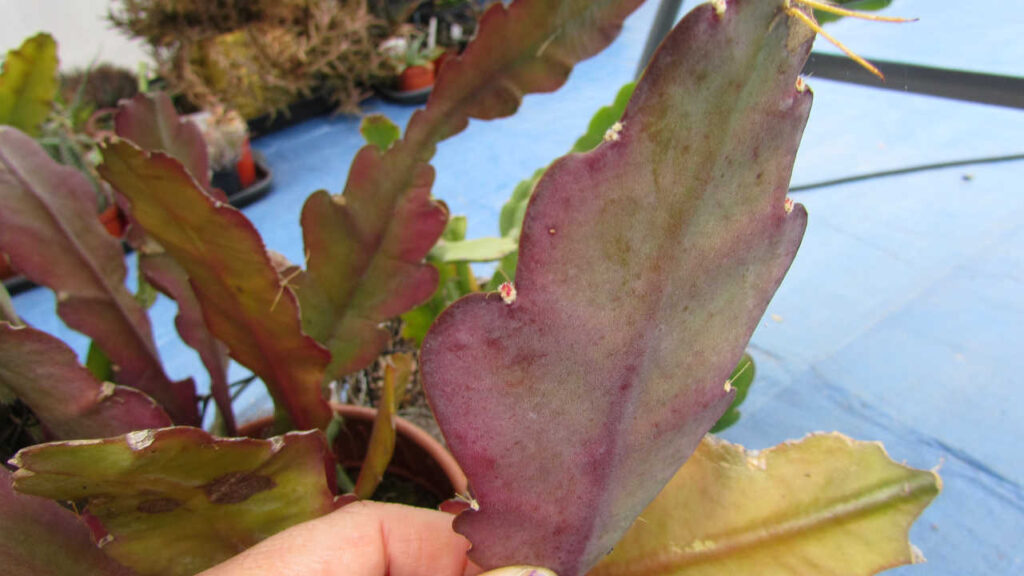
My Epiphyllum Cacti are coming into bud, these leafy epiphytic cacti produce the most incredible of large showy flowers in Spring and Summer.
I still haven’t watered the majority of my plants yet though, and this is because I live in Belfast N.Ireland, and in March and April its still quite chilly during the daytime and the nights can still be frosty, its not until mid April that the weather really starts to warm up for Spring here, and this is why I hold back on watering my collection until around mid April depending on the weather and the temperature, its not unusual for it to snow in April in UK and Ireland haha, and last Spring (2023 ) it was unseasonably very cold until late May and I had to hold back on watering my collection in the polytunnel until much later than normal, fingers crossed though April will be normal temperatures, and that means with the first watering I give them in mid April I will be able to give them all just a light watering ( pre watering ) first to moisten the soil and wake up their root systems, I give just enough water so the soil dries within a day or two, I then leave it a week or two and thats when I give them their first proper watering.
But If you have your cacti and succulents indoors in a heated room or sunny warm window its safe to go ahead and give them a watering now though, I have to hold back until mid April as my plants are in a polytunnel that is heated at 5c/41F just enough to keep them frost free and protected from very low temperatures, If I was to water too early and we get a cold and wet couple of weeks then it means the plants could sit in moist soil that does not dry out as fast in cold damp weather, I want to start to wake them up with watering when I know the day temperatures are at least in the 15c /60F range.
I have however had to give one of my Mammillarias that was VERY thirsty a light pre watering as I know this particular Mammillaria a Mammillaria camptotricha would be safe to water now, and I thought this would be a perfect example to show just how much water I give the plants for the very first time after the Winter, and if you want to see how much water to give your plants after winter then check out this video I made for my You Tube Channel called Desert Plants of Avalon on ‘How much water should you give your Cactus after Winter ? and you can watch this video below:
I have been keeping busy repotting plants in preparation for the growing season, and I make sure I check almost daily for any signs of insect pests or diseases on the plants, I also will be busy writing up plant labels and re arranging some plants in the polytunnel to make space so that when its warm enough I will be able to move all the non cold hardy cacti and Euphorbias that I currently have overwintering in my grow room back into the Polytunnel and yard for the Spring and Summer months.

Some of my Echeverias and other Succulents are growing flower spikes.
I have a lot of work to do on a lot of my Succulents this Spring too, pruning, and tidying them up from dead leaves, I am happy to say I have noticed flower spikes starting to grow on some of my Echeverias too, I will be filming an upcoming video very soon on all the Spring jobs I will be doing with all of my Cacti and Succulents on my You Tube Channel called Desert Plants of Avalon, so do stay tuned.

If you want to know more about how to grow Cacti and Succulents then do watch my You Tube Channel called Desert Plants of Avalon and do please Subscribe I would love you to follow me on my Prickly adventures.
Happy Growing Season everyone and here is to a blooming AMAZING Spring and Summer 2024.
